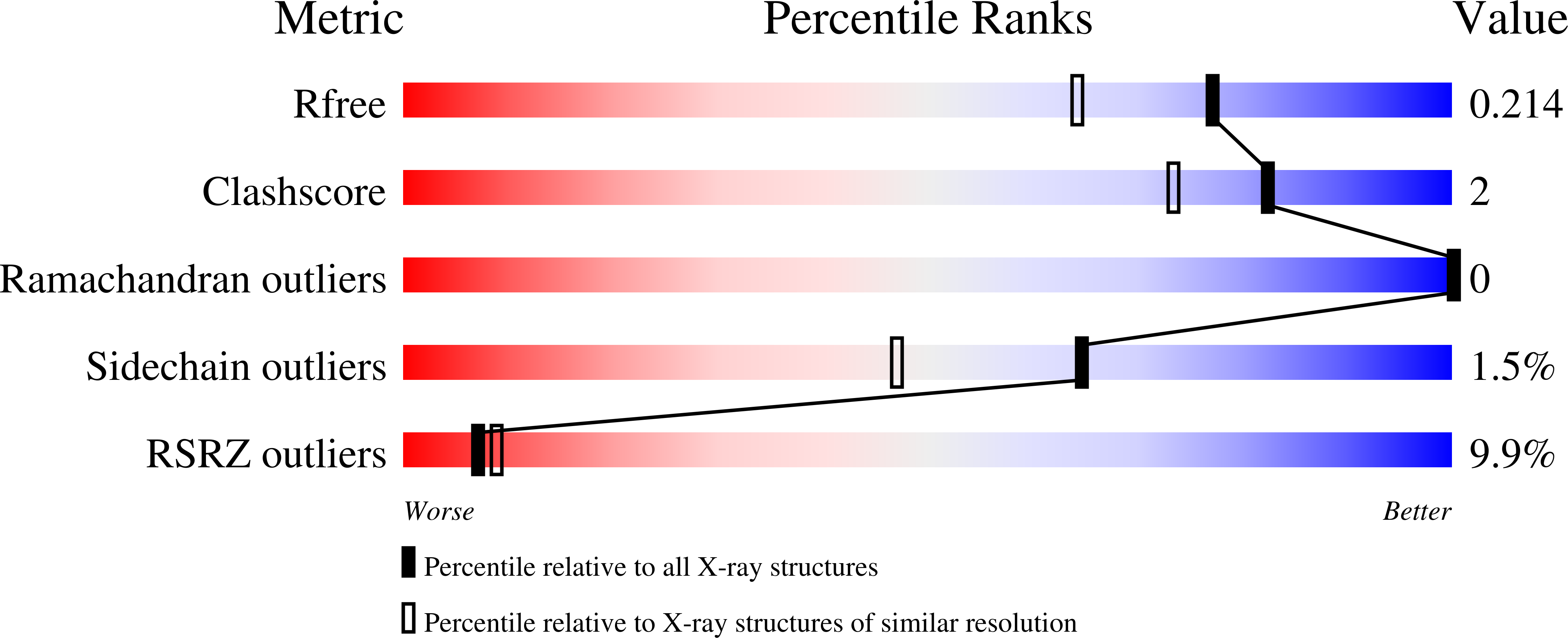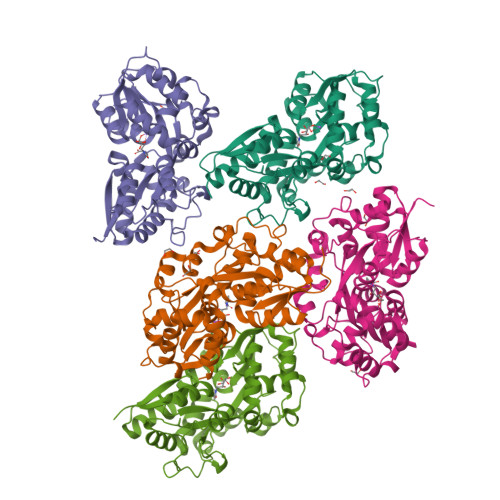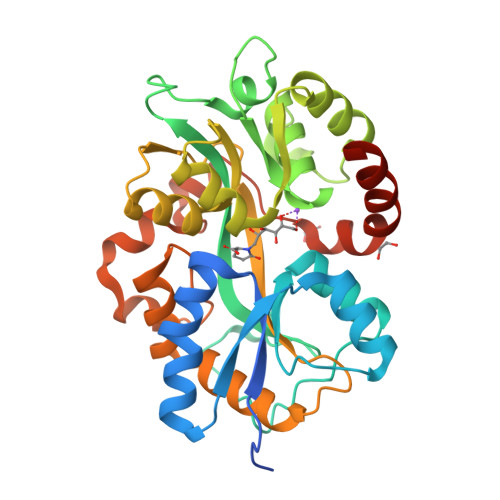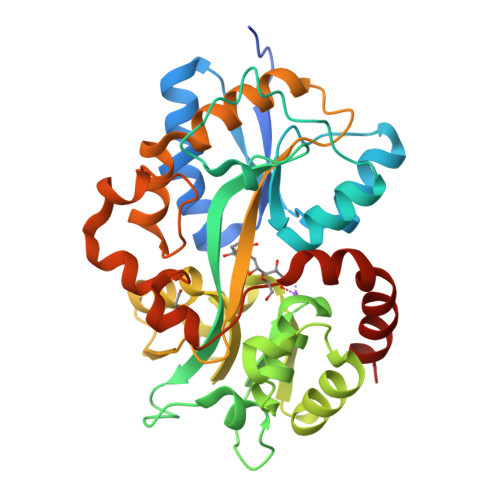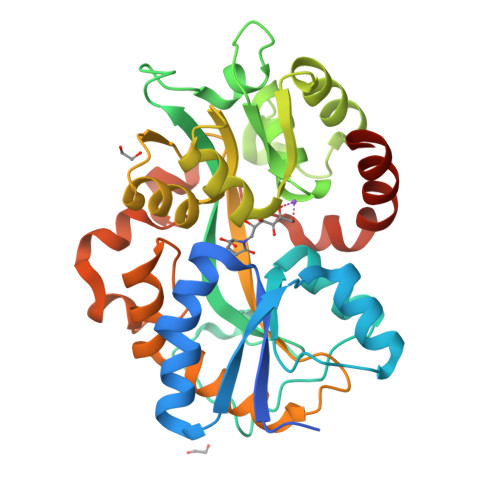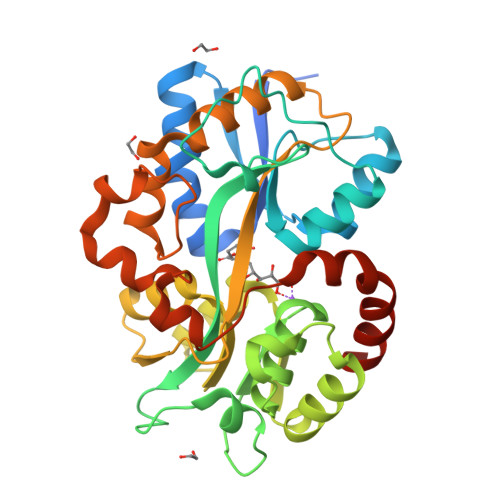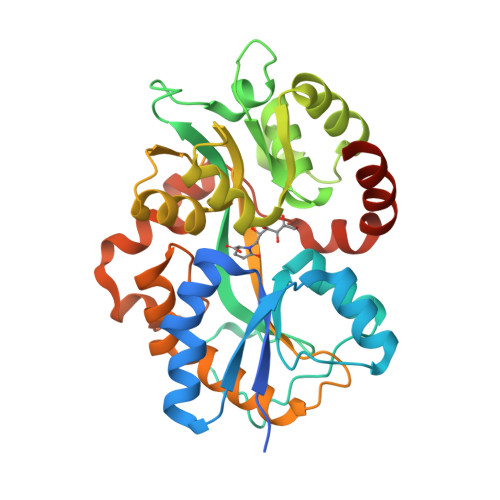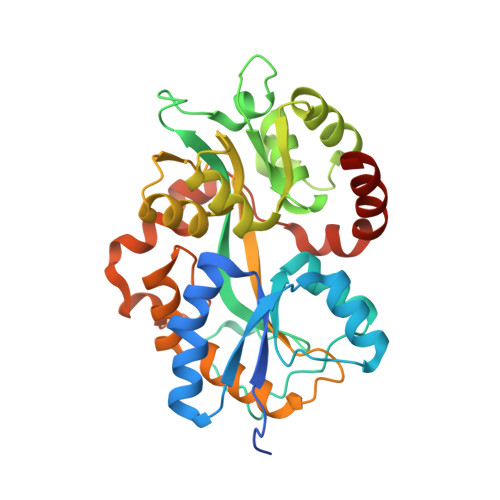Structural basis for two efficient modes of agropinic acid opine import into the bacterial pathogenAgrobacterium tumefaciens.
Marty, L., Vigouroux, A., Aumont-Nicaise, M., Pelissier, F., Meyer, T., Lavire, C., Dessaux, Y., Morera, S.(2019) Biochem J 476: 165-178
- PubMed: 30552142
- DOI: https://doi.org/10.1042/BCJ20180861
- Primary Citation of Related Structures:
6HLX, 6HLY, 6HLZ, 6HM2 - PubMed Abstract:
Agrobacterium tumefaciens pathogens genetically modify their host plants to drive the synthesis of opines in plant tumors. The mannityl-opine family encompasses mannopine, mannopinic acid, agropine and agropinic acid. These opines serve as nutrients and are imported into bacteria via periplasmic-binding proteins (PBPs) in association with ABC transporters. Structural and affinity data on agropine and agropinic acid opines bound to PBPs are currently lacking. Here, we investigated the molecular basis of AgtB and AgaA, proposed as the specific PBP for agropine and agropinic acid import, respectively. Using genetic approaches and affinity measurements, we identified AgtB and its transporter as responsible for agropine uptake in agropine-assimilating agrobacteria. Nonetheless, we showed that AgtB binds agropinic acid with a higher affinity than agropine, and we structurally characterized the agropinic acid-binding mode through three crystal structures at 1.4, 1.74 and 1.9 Å resolution. In the crystallization time course, obtaining a crystal structure of AgtB with agropine was unsuccessful due to the spontaneous lactamization of agropine into agropinic acid. AgaA binds agropinic acid only with a similar affinity in nanomolar range as AgtB. The structure of AgaA bound to agropinic acid at 1.65 Å resolution defines a different agropinic acid-binding signature. Our work highlights the structural and functional characteristics of two efficient agropinic acid assimilation pathways, of which one is also involved in agropine assimilation.
Organizational Affiliation:
Institute for Integrative Biology of the Cell (I2BC), CNRS CEA Univ. Paris-Sud, Université Paris-Saclay, Avenue de la Terrasse, 91198 Gif-sur-Yvette, France.







